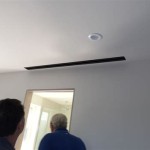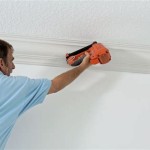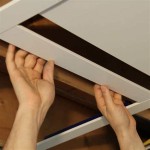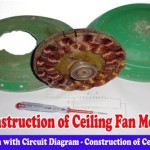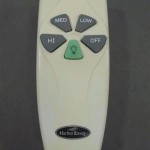A Guide To Ceiling Mounted Shower Curtains and Rods
Ceiling-mounted shower curtains and rods offer a functional and aesthetic solution for a wide range of bathroom configurations. They are particularly useful in bathrooms with unconventional layouts, high ceilings, or when a wall-mounted rod is not feasible. Understanding the different types, installation considerations, and benefits of ceiling-mounted systems is crucial for making an informed decision.
This guide aims to provide a comprehensive overview of ceiling-mounted shower curtains and rods, covering aspects from choosing the right system to ensuring proper installation and maintenance. It will delve into the various materials, designs, and applications, enabling readers to effectively enhance their bathroom space.
Understanding the Benefits of Ceiling Mounted Shower Systems
Ceiling-mounted shower curtains and rods offer several advantages over traditional wall-mounted options. One primary benefit is their versatility in accommodating unusual bathroom layouts. In bathrooms with freestanding tubs or showers positioned away from walls, a ceiling-mounted rod provides a stable and aesthetically pleasing solution for containing water and creating privacy. The ability to customize the shape and size of the curtain enclosure is substantially higher compared to that of a wall-mounted system. The track can be curved and sized to your specific needs.
Another significant advantage is their suitability for bathrooms with high ceilings. A ceiling-mounted rod eliminates the limitations imposed by wall height, allowing for longer shower curtains that reach the floor, thus minimizing water splashing and draft. This is particularly beneficial in older homes or converted spaces with non-standard ceiling heights.
Furthermore, ceiling-mounted systems offer a clean and minimalist aesthetic. Without the visual clutter of wall brackets, the shower curtain appears to float, contributing to a more open and spacious feel in the bathroom. This design element can be particularly appealing in contemporary or minimalist bathroom designs, enhancing the overall visual harmony of the space. In addition, they can serve as room dividers when open without the need for a bulky support fixture.
Finally, ceiling-mounted systems often provide enhanced stability and durability compared to wall-mounted options, especially when properly installed. The direct connection to the ceiling provides a stronger anchor, reducing the risk of the rod sagging or detaching, even with heavy or frequently used shower curtains. The better stability improves the curtain's function and extends its service life.
Selecting the Right Materials and Design
Choosing the appropriate materials and design for a ceiling-mounted shower curtain rod is essential for ensuring both functionality and aesthetic appeal. Common materials for the rods include aluminum, stainless steel, and occasionally plastic, each offering different levels of durability, corrosion resistance, and visual style. Stainless steel is generally the most durable and resistant to rust, making it an excellent choice for humid bathroom environments. Aluminum is lighter and more affordable, but may be less resistant to corrosion in the long run. Plastic options are the least expensive but can be prone to bending or breaking under the weight of heavier curtains.
The design of the rod also plays a crucial role. Straight rods are suitable for simple rectangular or square shower areas, while curved or L-shaped rods are ideal for corner showers or freestanding tubs. Circular or oval rods can create a complete enclosure around a freestanding tub, offering a unique and stylish look. In addition, track systems are also an option and can be customized to accommodate a wider variety of shower shapes.
The finish of the rod should complement the overall bathroom design. Common finishes include chrome, brushed nickel, matte black, and white. Chrome offers a classic and polished look, while brushed nickel provides a more subtle and contemporary feel. Matte black is a popular choice for modern bathrooms, and white blends seamlessly with white ceilings and walls.
The type of shower curtain used with a ceiling-mounted rod also influences the overall aesthetic and functionality. Fabric curtains offer a softer and more luxurious feel, while vinyl or plastic curtains are more water-resistant and easier to clean. The color and pattern of the curtain should complement the bathroom's decor and enhance the overall visual appeal. Consider choosing a liner, also, to prolong the use of the curtain itself and prevent mildew buildup.
Beyond the rod and curtain, the selection of mounting hardware is also important. Using appropriate screws and anchors for the ceiling material is critical for ensuring a secure and stable installation. For plaster or drywall ceilings, use anchors that are specifically designed for these materials. For concrete or tile ceilings, use appropriate drill bits and concrete screws. The hardware should also be corrosion-resistant to withstand the humid bathroom environment.
Installation Considerations and Best Practices
Proper installation is crucial for ensuring the stability and longevity of a ceiling-mounted shower curtain rod. Before starting the installation process, carefully measure the shower area and plan the placement of the rod. Ensure that the rod is positioned to provide adequate coverage and prevent water from splashing outside the shower area. Measure the distance between the ceiling and the desired height of the curtain, taking into account the length of the curtain and any necessary adjustments.
Identify the type of ceiling material to determine the appropriate mounting hardware and installation techniques. For plaster or drywall ceilings, locate the ceiling joists and use screws that are long enough to penetrate the joists for maximum stability. If joists are not accessible, use heavy-duty drywall anchors to distribute the weight of the rod and curtain. For concrete ceilings, use a hammer drill and concrete screws to securely attach the rod to the ceiling.
When installing the rod, use a level to ensure that it is perfectly horizontal. This will prevent the curtain from sagging or sliding to one side. Mark the locations of the mounting holes on the ceiling and drill pilot holes before inserting the screws. Use a screwdriver or drill to tighten the screws securely, but avoid over-tightening, which can damage the ceiling material.
For curved or L-shaped rods, ensure that the curves are aligned correctly and that the rod is securely anchored at all points. Use multiple mounting brackets for added stability, especially for longer or heavier rods. Consider using a stud finder to locate ceiling joists and anchor the brackets directly to the joists whenever possible.
After installing the rod, test its stability by gently pulling on it to ensure that it is securely attached to the ceiling. Hang the shower curtain and check that it moves smoothly along the rod without any obstructions. Make any necessary adjustments to the mounting brackets or curtain hooks to ensure optimal performance. If the rod feels unstable or wobbly, re-tighten the screws or use additional anchors to reinforce the installation.
Maintaining a ceiling-mounted shower curtain and rod involves regular cleaning to prevent mildew and soap scum buildup. Wipe down the rod and curtain hooks with a damp cloth and mild detergent regularly. Wash the shower curtain in the washing machine according to the manufacturer's instructions to remove stains and odors. Consider using a mildew-resistant shower curtain liner to protect the curtain from moisture and extend its lifespan. Periodically inspect the mounting hardware for signs of corrosion or loosening and tighten the screws as needed to maintain the stability of the rod.
When selecting a ceiling-mounted shower curtain rod, consider the weight capacity of the rod and the weight of the shower curtain. Choose a rod that can support the weight of the curtain without sagging or bending. For heavier curtains, use additional mounting brackets to distribute the weight more evenly. If the ceiling is particularly weak or unstable, consider using a support pole that extends from the floor to the rod to provide additional support.
In conclusion, the installation of a ceiling-mounted shower curtain requires careful planning and attention to detail. By following these guidelines and best practices, homeowners can ensure a safe, stable, and aesthetically pleasing shower enclosure that enhances the functionality and beauty of their bathroom space.

Affordable Ceiling Mounted Shower Curtains Sonny Haven

Diy Ceiling Mounted Curtain Rods With Step By Instructions Simplified Building

Shower Curtain Rails A Step By Guide

Affordable Ceiling Mounted Shower Curtains Sonny Haven
Ceiling Mounted Shower Curtain Rod With Diy Dans Le Lakehouse

Diy Double Shower Curtain Rod With Towel Bar Plans Inside Simplified Building

Ceiling Mounted Shower Rod With 2 Medium Supports

Hanging Curtains From The Ceiling Home Depot

Next Project Client F

Ceiling Track Shower Curtain
Related Posts


